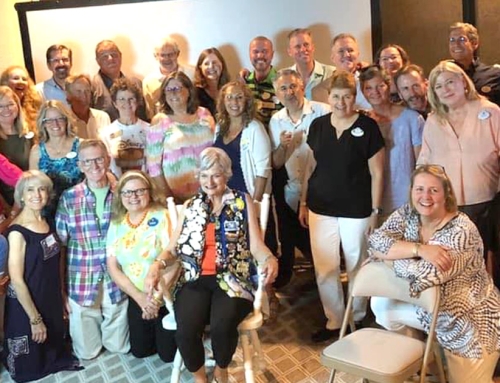At Integrated Loyalty Systems, our mission is to help our clients create cultures that are truly patient driven. One of our clients is Rochester General Hospital (RGH), and Doug Della Pietra, Director of Customer Services & Volunteers at RGH, has put much thought into patient-driven care. Team ILS is proud to have Doug as a guest blogger this week:
Many facilities and organizations have yet to adopt the use of social media primarily because of the associated risks. One of those risks is potentially exposing and publicly opening itself to complaints and negative comments by users through the organization’s various social media channels. My claim is that not only can we minimize an organization’s exposure to reputational damage, but we have the potential to transform a complaint and negative comment on a social networking site into an exceptional customer experience that creates life-long customer loyalty!
Before explaining how, I’d like to tell you my own story. A few weeks ago, I accompanied an immediate family member – diagnosed in May 2011 with stage 3 multiple myeloma – to a second opinion appointment. After an extremely long wait prior to registration and a poor encounter with the receptionist, I decided to tweet the experience as it happened – in real-time. A few of my tweets were negative and two were positive, thereby summing up what I would describe as a “mixed” patient/family experience.
Within 30 minutes of the first tweet, my iPhone notified me that the facility was following me on Twitter. At first, I was intrigued by the impression that my experience was being heard. However, with no reply from the facility to any of my tweets, in the end it seems that following me was primarily a facility-serving act. In my opinion, they missed a golden opportunity to transform a mixed patient/family experience into one that created raving and lifetime, loyal fans!
Without a lot of time and effort, the facility could have turned the mixed experience into a “good” one by offering a service recovery reply to one of my tweets:
We’re sorry to hear about the long wait & mix-up with another patient’s paperwork. Please call 123-456-7890; we’d like to discuss further
(Note: The reply above is intentionally brief so as to comply with the 140 character limit associated even with replies to tweets on Twitter.)
Whether I would have called does not matter as much as that such a reply would have communicated responsiveness (the facility is actually responding to and engaging me), sincerity (“we’re sorry…”), genuine interest (“please call”), and a willingness to listen and learn (“we’d like to discuss further”). With such a response, I could imagine telling this story to others about how the facility impressed me by reaching out and expressing an interest in following up on our mixed experience.
Taking the facility’s efforts another step, they could have transformed the mixed experience into an exceptional customer experience that created life-long customer loyalty by using a few tools and clues at their disposal. First, every tweet has a time-stamp – the number of seconds, minutes or hours since it was posted. Second, I revealed our location within the facility: “the BMT unit.” Third, my full name and Twitter profile picture provided identification information. Armed with tweet times, our location, and my full name and profile picture, the social media representative could have:
• Contacted the facility’s Patient Relations, Service Excellence, Patient Experience, Quality Improvement, Customer Services, etc. coordinator;
• Alerted him/her to the content of the live update regarding our experience, and
• Given the coordinator a copy of my Twitter profile picture and full name.
Next, the coordinator could have come to the BMT unit, briefly explained the situation to the unit’s clinical leader, and attempted to find our exact whereabouts in the unit. Once found, that person’s time and efforts would have been enough to exceed our expectations by demonstrating a proactive responsiveness and commitment to improve the patient and family experience! Had the facility done so, its name would have been mentioned in this blog and held up as a success story for effectively using mixed social media comments to gain raving fans and loyal customers for life!
Doug Della Pietra is the Director of Customer Services & Volunteers at Rochester General Hospital. He and ILS are currently working on improving RGH’s patient-driven healthcare in the patient arrivals and discharge process.
You can contact Doug at douglas.dellapietra@rochestergeneral.org.






Leave A Comment